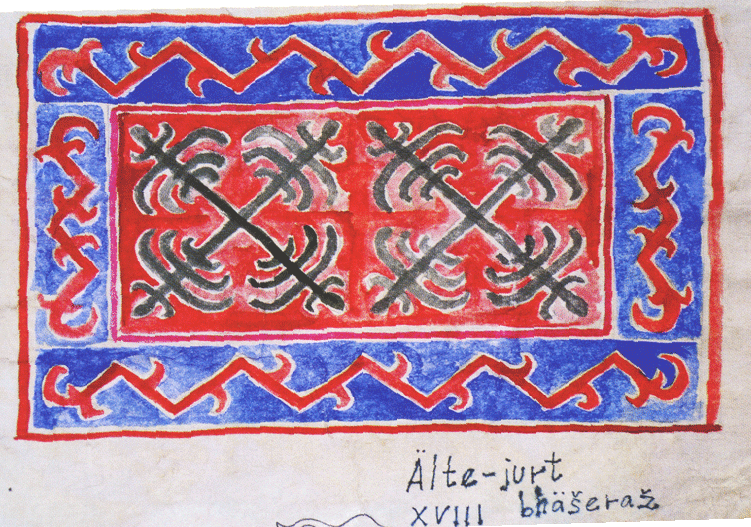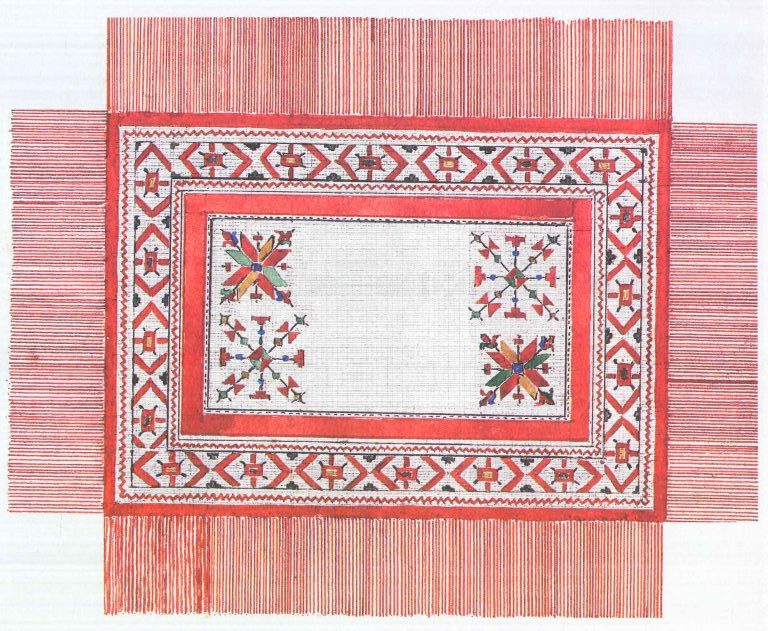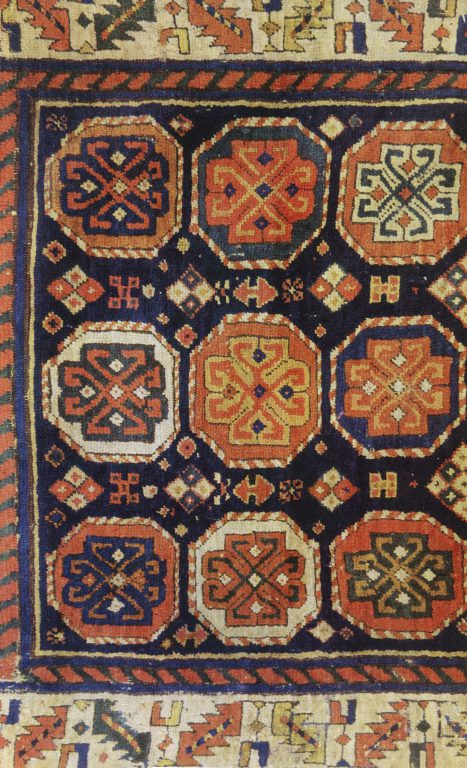
first half 17th century

India
Object qualities
-
Object
-
Type of arts & crafts 1
-
Type of arts & crafts 2
-
MediumCotton; plain weave, mordant dyed and painted, resist dyed
-
SizeTextile: L. 32 5/16 in. (82.1 cm) W. 18 1/2 in. (47 cm) Mount: L. 37 1/4 in. (94.6 cm) W. 23 3/4 in. (60.3 cm) D. 1 in. (2.5 cm)
-
Geography detailsAttributed to
India -
Country today
-
Datefirst half 17th century
Source of information
-
Type of sourceDatabase “Metropolitan Museum of Art”
-
Fund that the source refers toMetropolitan Museum of Art
Description
-
This small cotton cover was decorated using a traditional dyeing technique called kalamkari, which evolved in southern India. In this multi-step process, each color was applied with a stylus or by using wax resists before the entire cloth was submerged in a dye bath. The motif of a turkey in the central medallion would have been considered exotic, as turkeys had first entered India in only the previous century. In his memoirs, the Mughal emperor Jahangir wrote extensively about the animals, describing them in relation to more familiar species, including pea-hens and peacocks
Reconstructions of this ornament



























